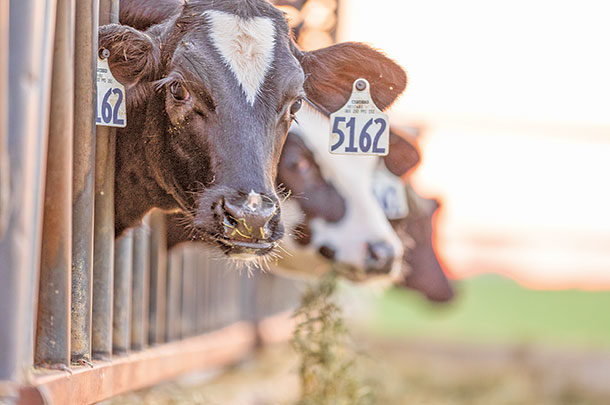While presenting the various benefits of genomic data, I told this team that, given their management practices and the excellent environment provided to the herd, I expected they would see significantly higher benefits of implementing a program compared with other operations.
The A.I. representative in attendance stopped me in my tracks and said: “Are you trying to tell me genetics will work differently in this herd than another? I’ve never heard that before.” I replied that while the principles of genetics are the same, a herd’s management practices can make a great impact on how those genomic traits are expressed.
As producers implement genomic testing into their management strategy, the tie between a herd’s environment and a herd’s genetic potential can’t be overlooked. Great management programs can result in more valuable and action-oriented genomic information.
Management practices and genetic expressions
An animal that scores high with genomic selection may be on track for fantastic milk production, fertility and overall profitability, but what if it caught chronic calf pneumonia? What if it contracted mastitis throughout its dry period or has fought consistent lameness? Sickness and disease caused by environmental factors will knock it down, and that genetic expression and peak potential can be lost.
While you can’t make a cow with bad genetics good, you can certainly make a cow with good genetics bad. An emphasis on consistently improving programs, from calf wellness and transition cow management to milk quality and reproduction, can help control environmental factors that threaten the genomic expression of a herd.
In my experience, there are many great managers in the dairy industry who answer “mediocre” when asked to rate their herd management because they are always on the cusp of what the next goal could be. There also are operations that leave a little to be desired. The fact is: Management can and does impact genetic expressions in a herd.
How genetic expression and performance can differ among herds
The Council on Dairy Cattle Breeding (CDCB) estimates that an average herd’s milk production heritability – the amount of differences in performance that can be attributed to genomic estimates – is 20%. The remaining 80% is attributed to environmental influences. As producers work to control these factors, genomics become more and more prominent as we lower the environmental influences and increase heritability.
For example, Figure 1 shows a herd that was tested with Zoetis genomic selection programs Clarifide and Clarifide Plus.

This herd’s management practices were average, such as conception risk and disease rate. Using genetic calculations, we could estimate that a cow at +1,000 genomic predicted transmitting abilities (GPTA) milk will produce 2,000 pounds more milk per lactation than a cow at zero GPTA milk. Overall, the herd observed an average 2.8 per pound of genomic milk increase. This was 40% more than expected and a good accomplishment. Now, imagine what could be achieved with a herd that is consistently tweaking their management strategies.
The herd featured in Figure 2 was doing a better job controlling those environmental influences compared with the previous herd.

In return, this herd saw greater results than predicted: a 5,100-pound genomic response. This is 2.5 times the expected response and a great testament to the relationship between a herd’s environment and genetic potential.
Good management resulting in even better performance
In today’s dairy industry, producers are falling behind if they are not progressing their herd. By implementing genomic testing and selection into management strategy, they will have a map to understand their current pressure points and benchmarks. The data can be a valuable tool in validating that the changes, tweaks and optimizations are actually working.
A dairy producer I have worked with over the years realized this connection. While evaluating her herd’s response to genomic selection, we found the herd was achieving a 2.6-pound increase in milk production – good, but could be better. While discussing how management practices can help a herd outperform genomic estimates, the producer told me the team was working to improve their heifer management program, and she was confident they were seeing higher-quality heifers calving compared with the previous year.
We decided to perform another genetic audit in nine months to determine the impact of these changes. When that time came, we found the herd achieved a 3.5-pound genomic response. What they were doing differently with their program was working, and this sparked a strategy to annually test and monitor their progress.
This is what planning for a sustainable herd looks like. When genomic data is used to identify problems, validate progress or indicate a pivot, producers can make powerful breeding and culling decisions to strive for improved profitability and productivity in the years to come.
That said, it is important for dairies with great management to not overlook the adoption of genomic testing. As mentioned before, you can’t make a bad cow good. The animals that have low genomic potential in a well-managed herd may achieve average performance, but cows with high genomic potential in the same herd will outperform them quite easily.
The bottom line
If you have a well-managed herd, genomics can be much more impactful for you than herds with major management challenges. Focusing on not only genomic potential but also the environment that surrounds the herd will help set you up for valuable data and improved performance.
References omitted but are available upon request. Click here to email an editor.











